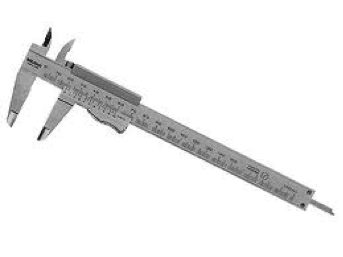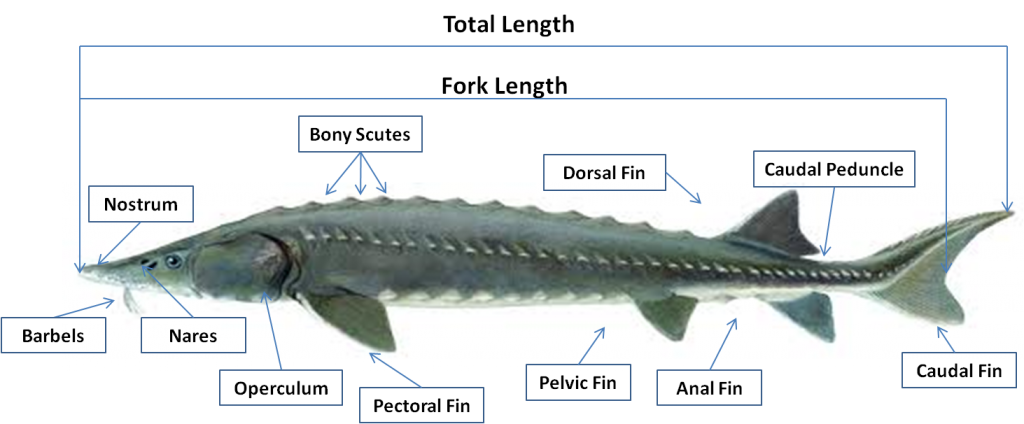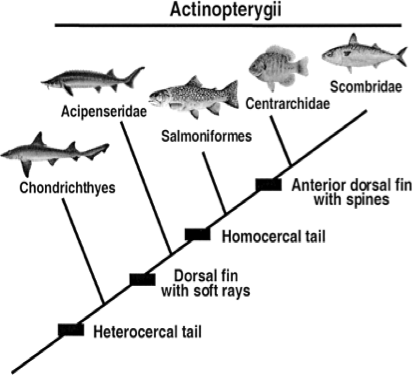Introduction to Sturgeon Taxonomy
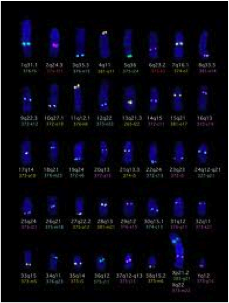 Chromosomes
Chromosomes
Species represent a fundamental level of biodiversity. There are many characters that are routinely measured to estimate degree of difference between two or more individuals. Data include morphological features like presence/absence of features or differences in size (Lake-Sturgeon-Phylogeny-and-Morphology.pdf). Genetic features including DNA sequences and chromosomal number and size are also used (Primary Section Phylogeny background_Genetics.doc).

DNA Sequences
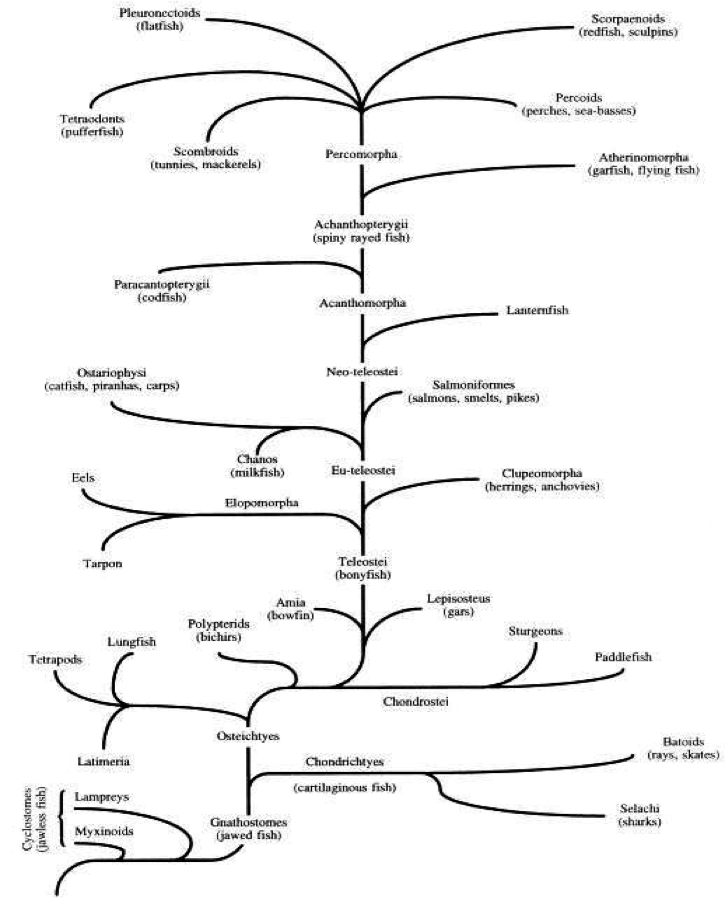
Simplified phylogenetic tree of the fishes. (Examples of food-fish, using common English names are shown in parantheses). (SOURCE: N. Bonde (1994), Geological Inst., Copenhagen)
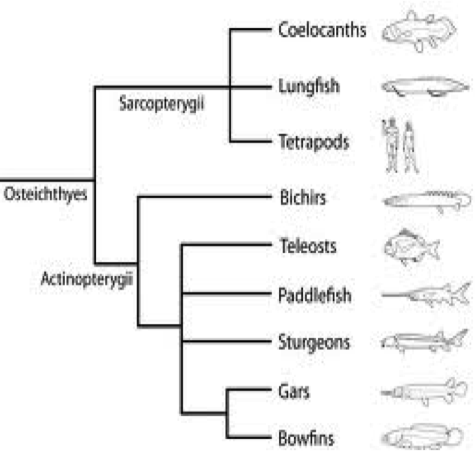
The mitochondrial phylogeny of an ancient lineage of ray-finned fishes (Polypteridae) with implications for the evolution of body elongation, pelvic fin loss, and craniofacial morphology in Osteichthyes.
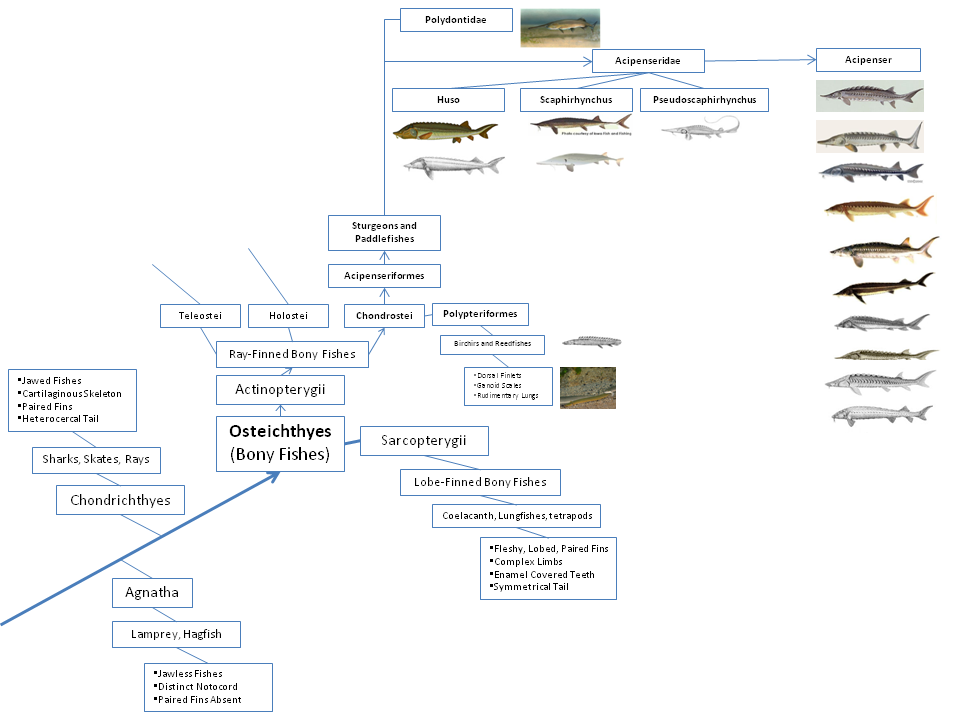
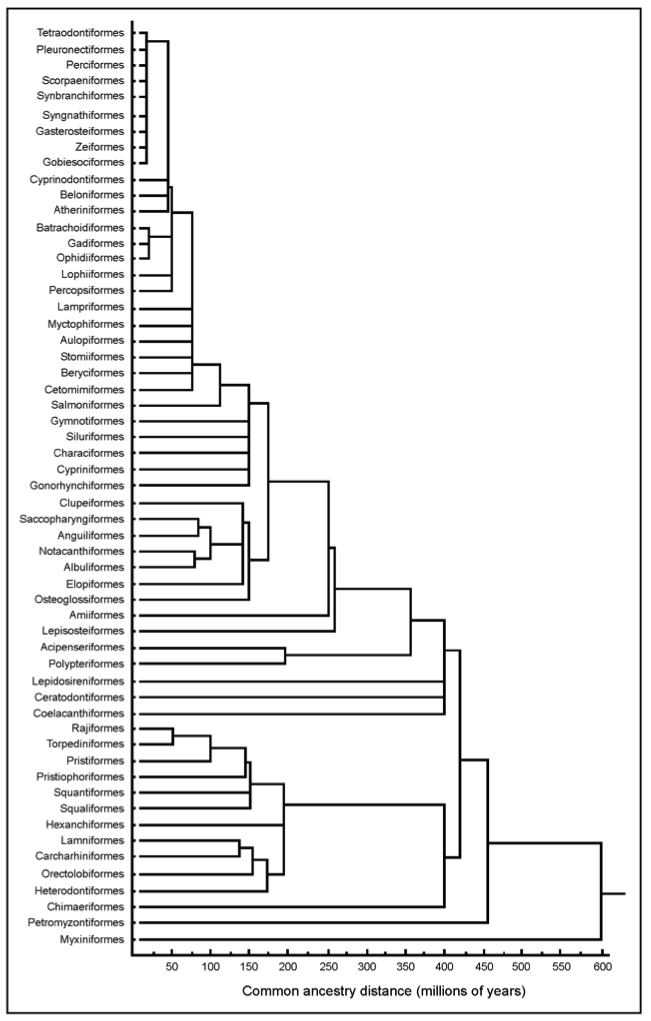
Cluster analysis of extant of fishes as determined by evidence of common ancestry or by the appearance of fossil forms.
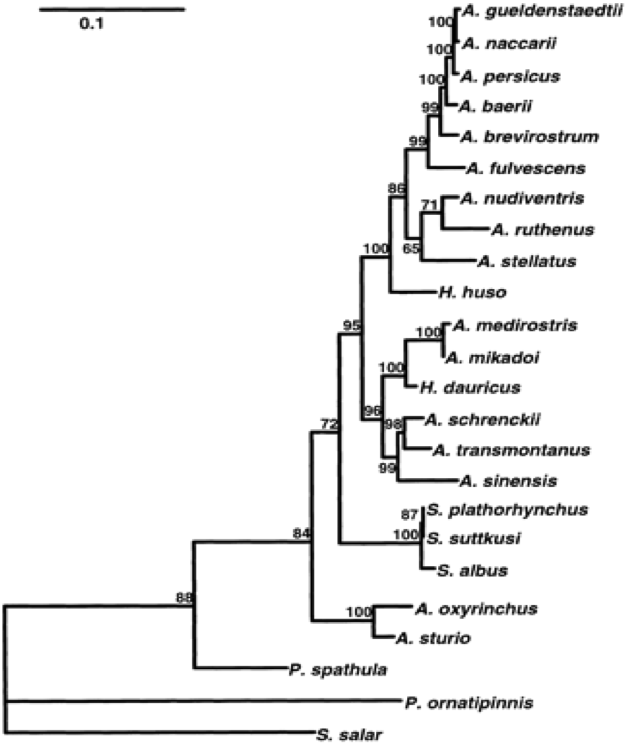
Phylogenetic tree based on cytochrome-b gene sequences estimated by the maximum-likelihood algorithm using PUZZLE. The quartet-puzzling support values are shown at each node and were derived from 1000 puzzling steps. The tree was rooted using the corresponding outgroup sequences from Salmo salar and Polypteris ornatipinnis.
http://www.genetics.org/content/158/3/1203/F1.expansion.html
